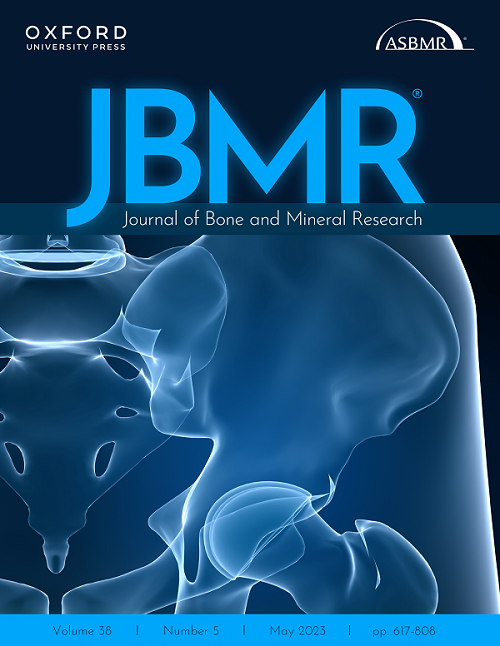下载PDF
{"title":"Electrocardiogram Changes Following Intravenous Bisphosphonate Infusion: A Systematic Review and Meta-Analysis","authors":"Alex Shoung, Nicholas Shoung, Rachael Hii, Nitesh Nerlekar, Peter R Ebeling, Alexander J Rodríguez","doi":"10.1002/jbmr.4911","DOIUrl":null,"url":null,"abstract":"<p>Bisphosphonates are first-line treatments for several bone and mineral disorders. Studies have reported an increased incidence of serious atrial fibrillation in patients receiving bisphosphonates; however, uncertainty remains as to whether electrical disturbances are precipitated by bisphosphonates. We aimed to review the literature for studies reporting electrocardiogram (ECG) findings in patients receiving intravenous bisphosphonates for any indication. We searched MEDLINE and EMBASE from inception until January 14, 2023, for studies reporting ECG parameters after intravenous bisphosphonate infusion. We excluded studies that only reported atrial fibrillation. Study quality was assessed using the Newcastle-Ottawa scale. Continuous data were meta-analyzed if reported in at least two studies. Random-effects models were fitted and reported as standardized mean difference (SMD) with 95% confidence intervals (95% CIs). We found 1083 unique records, of which 11 met our inclusion and exclusion criteria. Studies had a low to low/moderate risk of bias. Six prospective cohort studies were included in the meta-analysis. Five studies used zoledronic acid, whereas one study used pamidronate. Most studies (<i>n</i> = 4) were conducted in postmenopausal women with osteoporosis, one study was conducted in patients with bone metastases, and one study in children with osteoporosis secondary to cerebral palsy. Study populations ranged from <i>n</i> = 15 to <i>n</i> = 116. Heart rate–corrected QT (QTc) was significantly longer post-infusion (SMD = 0.46 ms [95% CI 0.80 to 0.11]; <i>n</i> = 67 patients, <i>k</i> = 2 studies, <i>τ</i><sup>2</sup> = 0). There were no differences in heart rate, P wave (maximum), P wave (minimum), P wave dispersion, PR interval, QRS duration, QTc, QTc (maximum), QTc (minimum), and QTc dispersion. The correlation between pre- and post-infusion QTc was not significant (<i>p</i> = 0.93). Overall, there is a weak association between intravenous bisphosphonate infusion and a QTc interval prolongation. However, there is insufficient evidence to support an association between intravenous bisphosphonate and any ECG variable changes, which may precipitate atrial fibrillation. © 2023 The Authors. <i>Journal of Bone and Mineral Research</i> published by Wiley Periodicals LLC on behalf of American Society for Bone and Mineral Research (ASBMR).</p>","PeriodicalId":185,"journal":{"name":"Journal of Bone and Mineral Research","volume":"38 11","pages":"1679-1688"},"PeriodicalIF":5.1000,"publicationDate":"2023-09-08","publicationTypes":"Journal Article","fieldsOfStudy":null,"isOpenAccess":false,"openAccessPdf":"https://asbmr.onlinelibrary.wiley.com/doi/epdf/10.1002/jbmr.4911","citationCount":"0","resultStr":null,"platform":"Semanticscholar","paperid":null,"PeriodicalName":"Journal of Bone and Mineral Research","FirstCategoryId":"3","ListUrlMain":"https://onlinelibrary.wiley.com/doi/10.1002/jbmr.4911","RegionNum":1,"RegionCategory":"医学","ArticlePicture":[],"TitleCN":null,"AbstractTextCN":null,"PMCID":null,"EPubDate":"","PubModel":"","JCR":"Q1","JCRName":"ENDOCRINOLOGY & METABOLISM","Score":null,"Total":0}
引用次数: 0
引用
批量引用
Abstract
Bisphosphonates are first-line treatments for several bone and mineral disorders. Studies have reported an increased incidence of serious atrial fibrillation in patients receiving bisphosphonates; however, uncertainty remains as to whether electrical disturbances are precipitated by bisphosphonates. We aimed to review the literature for studies reporting electrocardiogram (ECG) findings in patients receiving intravenous bisphosphonates for any indication. We searched MEDLINE and EMBASE from inception until January 14, 2023, for studies reporting ECG parameters after intravenous bisphosphonate infusion. We excluded studies that only reported atrial fibrillation. Study quality was assessed using the Newcastle-Ottawa scale. Continuous data were meta-analyzed if reported in at least two studies. Random-effects models were fitted and reported as standardized mean difference (SMD) with 95% confidence intervals (95% CIs). We found 1083 unique records, of which 11 met our inclusion and exclusion criteria. Studies had a low to low/moderate risk of bias. Six prospective cohort studies were included in the meta-analysis. Five studies used zoledronic acid, whereas one study used pamidronate. Most studies (n = 4) were conducted in postmenopausal women with osteoporosis, one study was conducted in patients with bone metastases, and one study in children with osteoporosis secondary to cerebral palsy. Study populations ranged from n = 15 to n = 116. Heart rate–corrected QT (QTc) was significantly longer post-infusion (SMD = 0.46 ms [95% CI 0.80 to 0.11]; n = 67 patients, k = 2 studies, τ 2 = 0). There were no differences in heart rate, P wave (maximum), P wave (minimum), P wave dispersion, PR interval, QRS duration, QTc, QTc (maximum), QTc (minimum), and QTc dispersion. The correlation between pre- and post-infusion QTc was not significant (p = 0.93). Overall, there is a weak association between intravenous bisphosphonate infusion and a QTc interval prolongation. However, there is insufficient evidence to support an association between intravenous bisphosphonate and any ECG variable changes, which may precipitate atrial fibrillation. © 2023 The Authors. Journal of Bone and Mineral Research published by Wiley Periodicals LLC on behalf of American Society for Bone and Mineral Research (ASBMR).
双膦酸盐静脉输注后的心电图变化:系统综述和荟萃分析。
双膦酸盐是治疗几种骨骼和矿物质疾病的一线药物。研究报告称,在接受双磷酸盐治疗的患者中,严重心房颤动的发生率增加;然而,双膦酸盐是否会引发电干扰仍存在不确定性。我们的目的是回顾文献,报告接受静脉注射双磷酸盐的患者的心电图(ECG)发现是否有任何指征。从开始到2023年1月14日,我们搜索了MEDLINE和EMBASE,以寻找报告静脉输注双磷酸盐后心电图参数的研究。我们排除了仅报告心房颤动的研究。研究质量采用纽卡斯尔-渥太华量表进行评估。如果在至少两项研究中报告了连续数据,则对其进行荟萃分析。随机效应模型被拟合并报告为标准化平均差(SMD),置信区间为95%(95%CI)。我们发现了1083个独特的记录,其中11个符合我们的纳入和排除标准。研究的偏倚风险从低到低/中等。荟萃分析包括6项前瞻性队列研究。五项研究使用唑来膦酸,而一项研究使用帕米膦酸。大多数研究(n = 4) 在绝经后骨质疏松症妇女中进行,一项研究在骨转移患者中进行,另一项研究对继发于脑瘫的骨质疏松症儿童进行。研究人群从n = 15至n = 输注后心率校正QT(QTc)明显延长(SMD = 0.46 ms[95%CI 0.80至0.11];n = 67名患者,k = 2项研究,τ2 = 0)。心率、P波(最大值)、P波最小值、P波离散度、PR间期、QRS持续时间、QTc、QTc(最小值)和QTc离散度无差异。输注前后QTc的相关性不显著(p = 0.93)。总体而言,静脉输注双磷酸盐与QTc间期延长之间存在微弱关联。然而,没有足够的证据支持静脉注射双磷酸盐与任何可能引发心房颤动的心电图变量变化之间的关联。©2023作者。由Wiley Periodicals LLC代表美国骨与矿物研究学会(ASBMR)出版的《骨与矿产研究杂志》。
本文章由计算机程序翻译,如有差异,请以英文原文为准。



